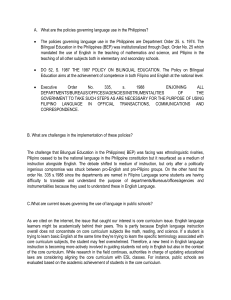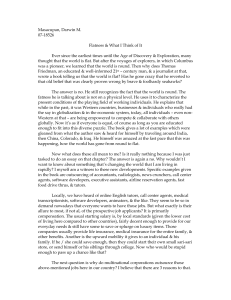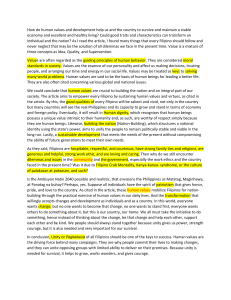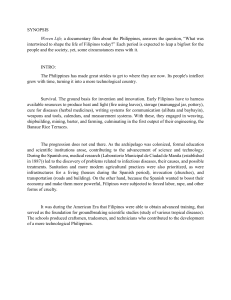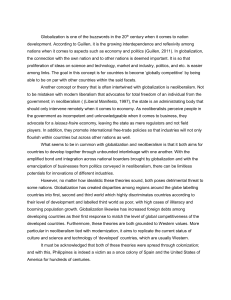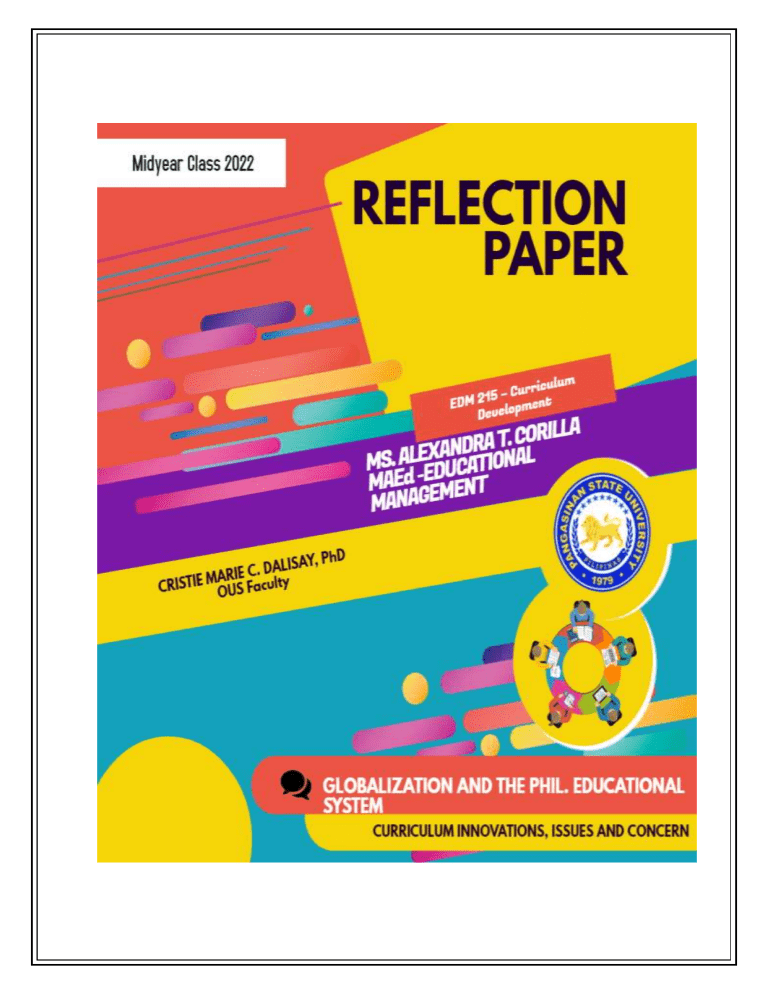
The Philippines emerged from three centuries of colonization about fifty years ago. Colonialism by Spain and a further 50 years of US rule. Modern education, which had been greatly influenced by American influence, promised optimism and mobility for individuals as well as economic advancement for the nation amid the euphoria of statehood. It is essential to consider the importance of education in the lives of more than 70 million Filipinos after fifty years of postcolonial development. The people of the Philippines are kind-hearted, wise, and resourceful. It is a stunning island nation. However, many of kids are battling to Basic schooling is denied to those who must live on the streets. Urban underclass suffer from homelessness while performing inadequately paid jobs satisfy their bare need. In the country, rural populations predominate out a meager existence. The number of Filipinos traveling abroad to look for Work has exploded, generating remittances valued to an economy beset by unmanageable debt. Resource extraction, supported by export-oriented growth-first economic policies and methods, causes lasting environmental damage throughout the archipelago destruction. Even after the Marcos regime was overthrown, social when the prevalent modernization model of growth exacerbates social inequity and ignites political confrontations, Armed revolutionaries' conflicts. Globalization is spreading more and more. The turn of the century, heavier burdens were put on society. of marginalization, debt, and poverty on the shoulders of the vulnerable majority of men, women, and children in the Philippines. Looking at this social situation, it is undoubtedly important to askWhat part the modernization paradigm has played in the modernization of education the difficulties of national and global development. Facing you Is there any accountability or responsibility on the part of the Philippine educational system for the myriad social, economic, political, and cultural issues? The ability and necessity of educational values, practices, and buildings be changed to assist in constructing a country based on the values of democracy, nonviolence, justice, and human rights. The Philippines is moving toward 21st Century Education in response to globalization, desiring to deliver high-quality instruction to achieve excellence in learning, appropriate teaching, and qualified resource instructors. The K–12 basic education program was cited in the scenario as the first system of education, followed by the current system and the previous/old system. A clear comparison of these two systems has been made in favor of the latter, and the significance of its program to globalization has been noted. Documents have been used to trace the functions of the new system, and they have clearly shown partial records of phenomena that globalization changed the system but did not change education. In some ways, literature is a paradox, thus this study suggests pursuing comparative research to compare and defend the earlier. The lack of resources and corruption in the education system make it difficult for all Filipinos to receive a high-quality education. One solution is to provide financial assistance to women who need to pay for their children's education. Through micro-lending, these women can purchase school uniforms, textbooks, and other school supplies. Declining educational standards Teachers in colleges rarely complain about the caliber of the pupils they receive. They criticize the students' incapacity to put together even a simple sentence, let alone an entire paragraph. Private schools have come under fire for producing graduates that are only halfway competent and later join the ranks of the country's educated unemployed. These are all signs of inadequate educational quality. Low educational standards are the result of a number of factors. Studies and factfinding commissions have revealed that the low government budget for education, poor teacher quality, poor management of schools, poor lab and library facilities, poor learning environments, the curriculum's content, inadequate books and science equipment, the poor method of instruction, a lack of classrooms, and other factors are to blame for the declining quality of education. Philippine education has a colonial, feudal, imperial, commercial, and elite character. The fact that the educational system in the Philippines has mostly been and still has American orientation and goals is a very broad accusation. Despite years of independence, our educational system has yet to be able to eradicate the pervasive colonial attitude that exists both inside and outside of academia. Higher education is currently more of a privilege than a right because it depends on financial ability. Lack of school facilities, books, and equipment Due to the rise in child enrollment and enrollment ratio since 1960, elementary enrollment has been growing at a high rate of 4% each year. Particularly severe shortages exist for textbooks and classrooms. According to estimates, there are 40,000 fewer classrooms needed nationwide, and the DECS (now DepEd) runs two shifts in many schools. Even more problematic is the textbook issue. According to a survey conducted in advance of a World Bank education loan, there are 10 books for every student in public elementary schools, and 79% of those books are older than five years. This predicament has endured for a long time. Underpaid and overworked teaching personnel Although teaching is sometimes said to as the "most renowned of all occupations," many teachers believe that this honorable reputation is really a myth. We now perceive Filipino teachers as overworked and underpaid professionals during the past three decades. Policy involving bilingualism and the issue of a national tongue The goal of the bilingual education policy is to create a Filipino who is fluent in both Filipino and English. Since the DECS adopted the bilingual policy 20 years ago, more than half of the subjects in the elementary and secondary curricula of both public and private schools have been taught in Tagalog-based Pilipino. The natural sciences and mathematics are still taught in English. Curriculum design's main objective is to match learning methods, resources, and experiences with predetermined outcomes. From this perspective, a good curriculum ought to be effective and results-driven. The scope of a project is usually decided upon by curriculum designers using tools like learner personas, requirements analyses, and pre-existing assessment data. From there, it becomes crucial to create learning strategies that relate to the traits of the intended learners in order to assist them in achieving the desired results. Designing curriculum with the end in mind involves managing, designing, and organizing learning objectives, competencies, and standards within a curriculum. The process of designing curriculum with the end in mind is commonly referred to as “backward design” (Wiggins & McTighe, 1998). The major concept important to curriculum designers is that instead of starting with content or topics (common historical practice by many educators), backward design starts with the outcomes and then works backwards to address the content, topics, strategies, and materials. Use of learning objective taxonomies is one of the fundamental components of backward design. Bloom's Taxonomy is one of the most popular of these taxonomies (Bloom, 1956). The revised version n of Bloom's Taxonomy categorizes learning objectives into seven categories: recall, comprehend, apply, analyze, evaluate, and create. The cognitive learning processes that are represented by these levels are manifested in a variety of actions. Taxonomies like Bloom's offer a framework for classifying different learning outcomes and choosing the best educational tactics for a given learning level. A learning objective at the understand level, for instance, will probably be created very differently than one at the evaluate or create levels. This affects the strategies used, as well as the alignment of the curriculum's components and the right learner level (i.e. novice, intermediate, advanced).



